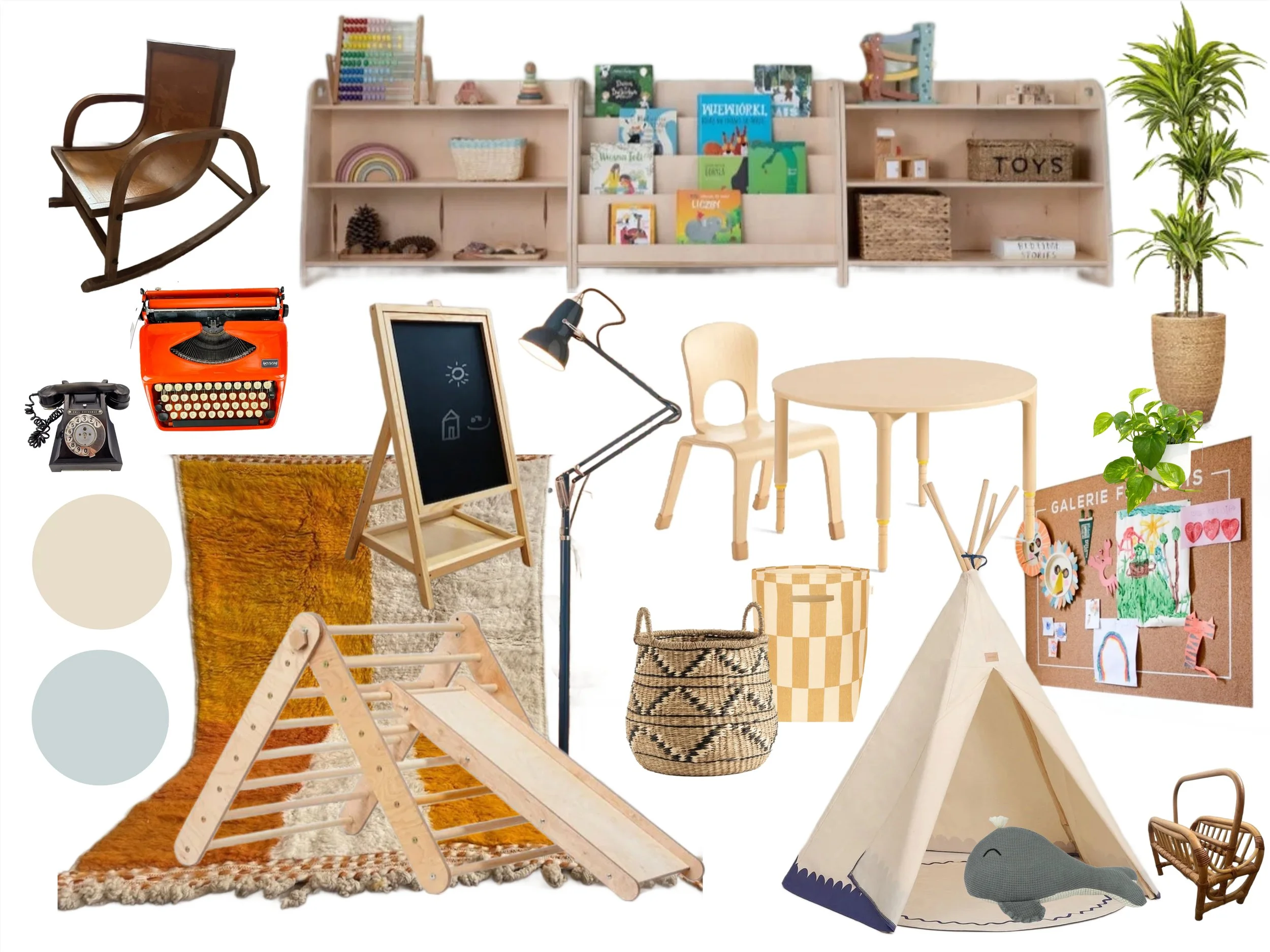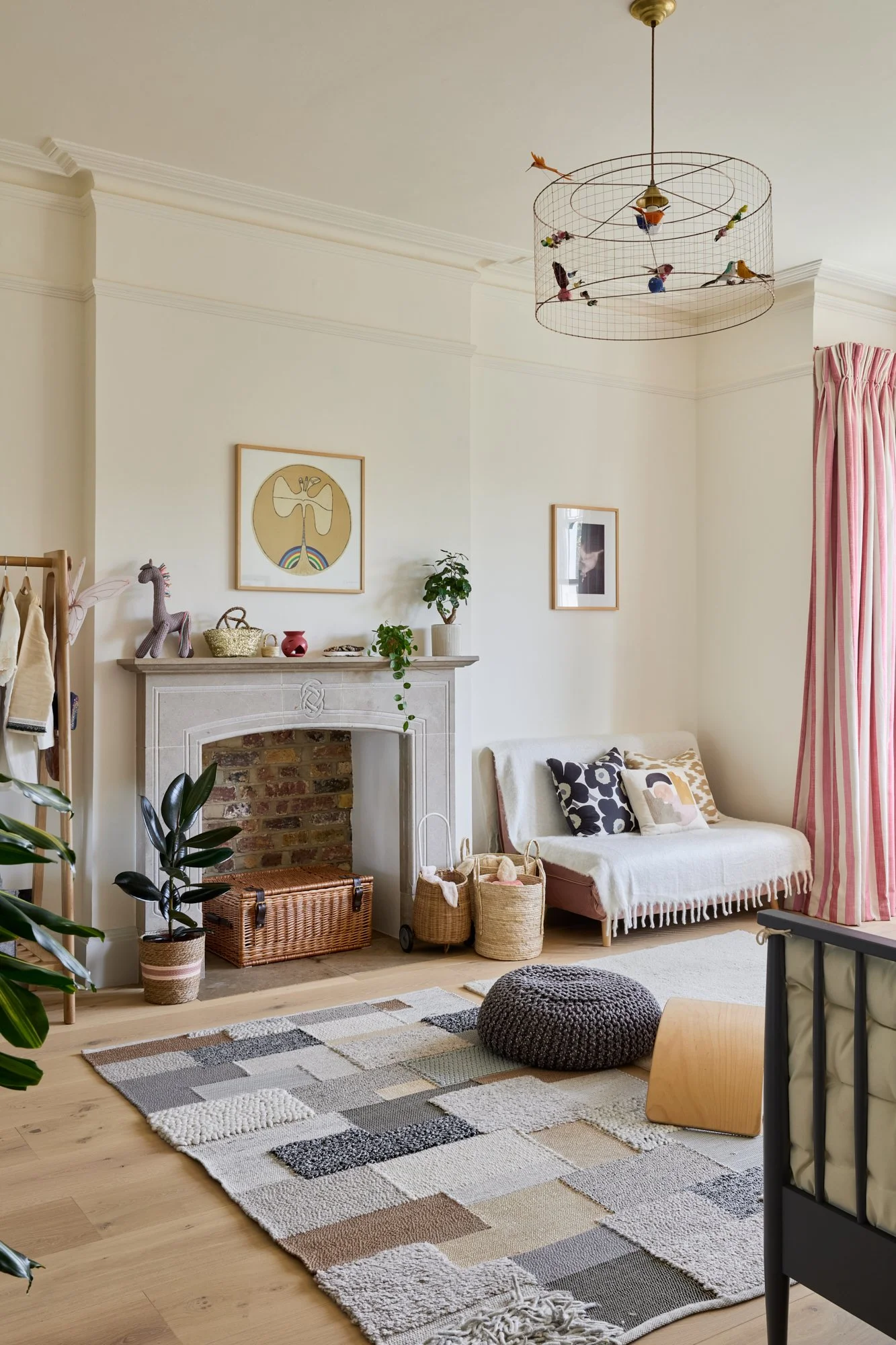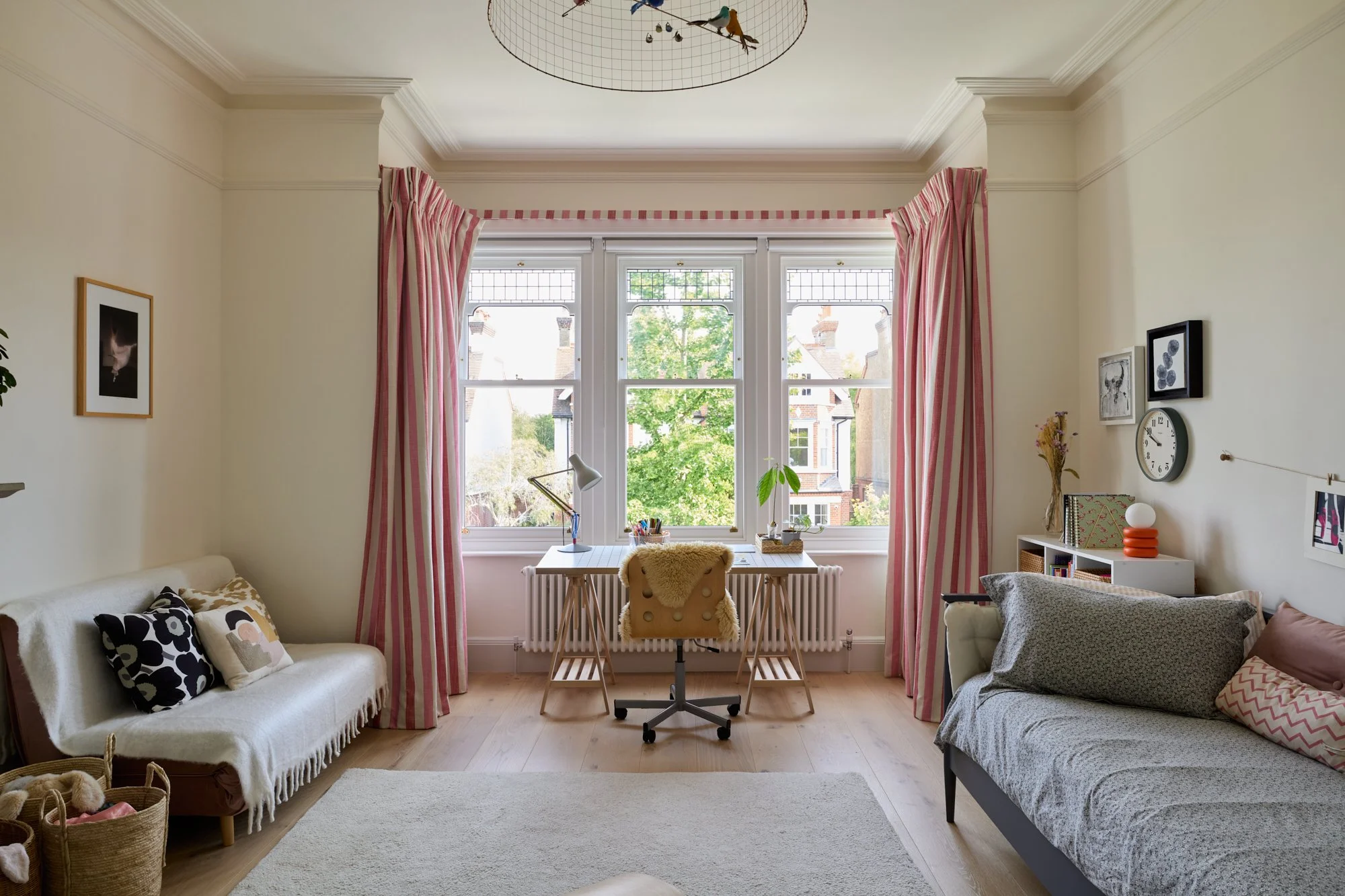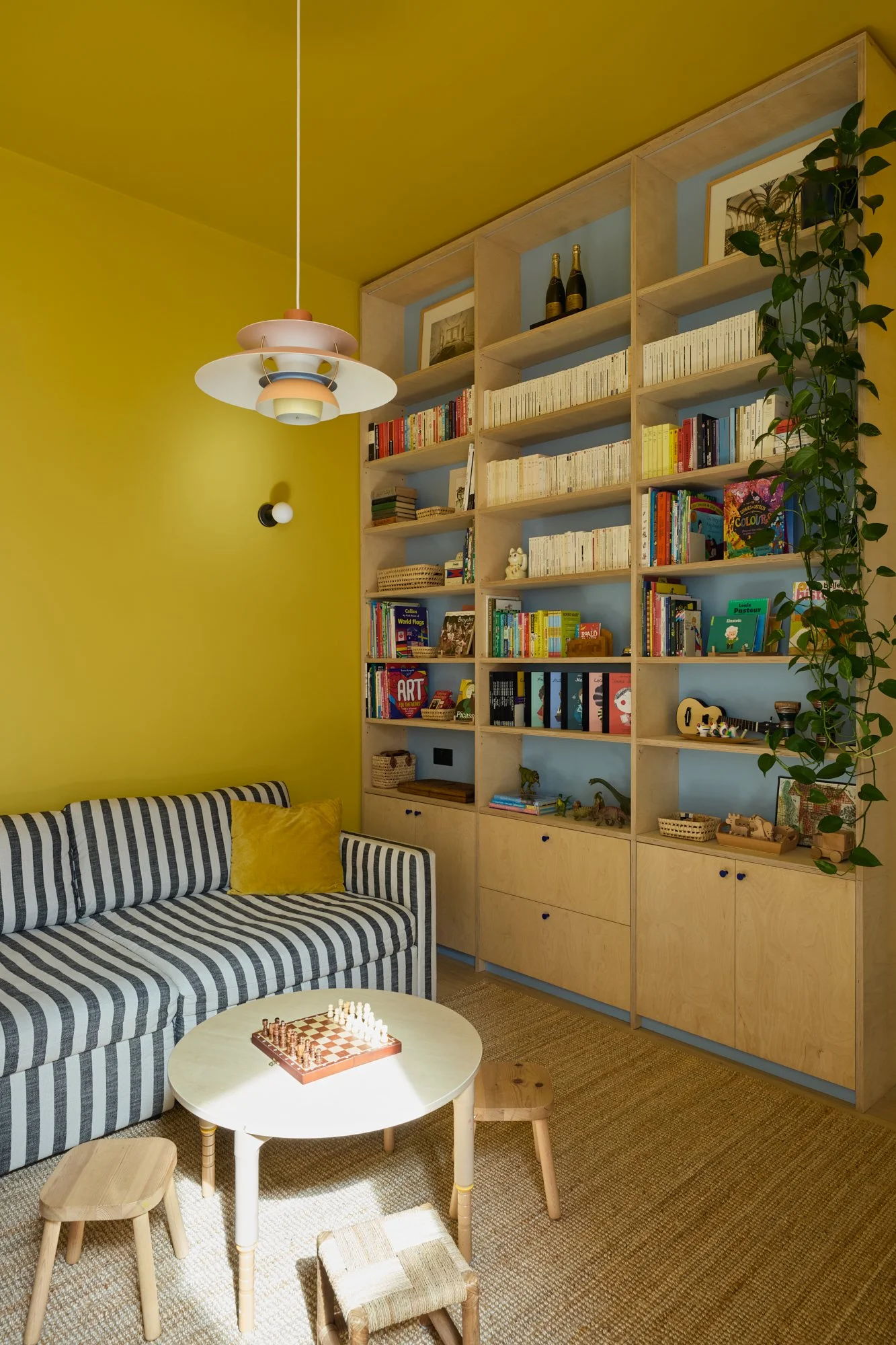Design with a Montessori mindset
You may have heard of the benefits of Montessori environments for children’s education and wellbeing. I like to incorporate the key principles of Montessori philosophy into family homes design, without being a purist.
At the heart of Montessori methodology is promoting independence. This means arranging your home so children can access the items they need for self-care, daily activities, and even participation in household chores — all without constant adult help. Here’s how this principle can be applied in practice:
Montessori playroom moodboard for a toddler
Kitchen
Prioritise under-counter storage for everyday items like cups, plates, and cutlery, so children can help set the table or empty the dishwasher.
Dedicate a drawer for their own “tools” to foster a love of cooking.
Allow access to cleaning tools such as a vacuum or mop, or provide child-sized alternatives.
Bedroom
Keep everyday clothing within easy reach.
Use a lower bed to encourage freedom of movement and safe independence.
Create clear zones: one for sleep (I love using daybeds), one for dressing (accessible wardrobe or shelves), one for work (a child-sized desk or table), and one for play (an open floor area with a small selection of toys). Defining these areas gives children a sense of order and purpose within their room.
7y old girl bedroom with a large play area in the middle
7y old girl bedroom with neutral colours and playful accents
Entryway
Create a corner with hooks and baskets at child height for coats, shoes, and bags. This encourages responsibility and self-organisation.
Playroom / Living room play area
Combine open shelves for toys and activities on display with closed storage for items that rotate.
Add front-facing bookshelves to encourage reading. Seeing the covers is more inviting than spines lined up on a shelf, sparking children’s interest and curiosity.
Playroom with a combination of closed storage and open shelves
Bathroom
Provide step stools, low hooks, and accessible storage for toiletries and towels to encourage self-care routines.
Key design principles
Minimise visual overwhelm
Keep walls clean and uncluttered, especially in bedrooms, to create a calm environment and support focus.
Prioritise floor space
Children need room to move, play, and explore. Leave as much open floor space as possible — even more important than a large bed in a bedroom.
Choose natural, timeless materials
Natural woods, woven baskets, cotton, and neutral tones create a calm, grounding atmosphere that grows gracefully with the child.
Final thoughts
Montessori-inspired design isn’t about strict rules or minimalism for its own sake. It’s about creating a home that supports independence, encourages exploration, and nurtures curiosity, while remaining warm, functional, and family-friendly. Small changes can make a big difference in a child’s confidence and engagement with their environment.
Desk corner of a 5y old boy’s bedroom
Note: Every child is different, and these ideas should always be adapted to your child’s age, stage of development, and individual needs. What works for a toddler may look different for a school-aged child, but the principle remains the same — creating safe spaces that foster independence, confidence, and joy.





